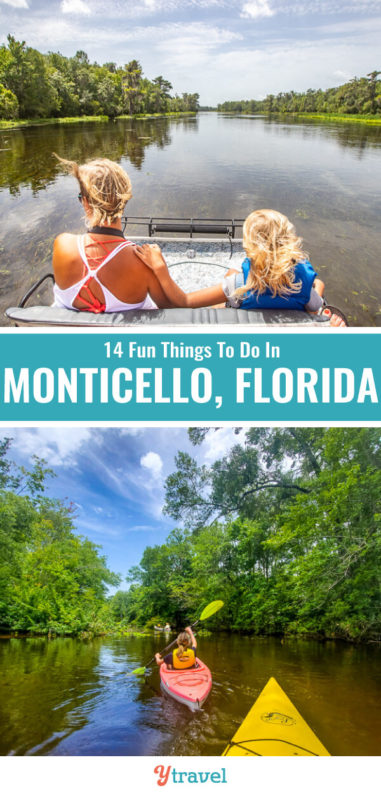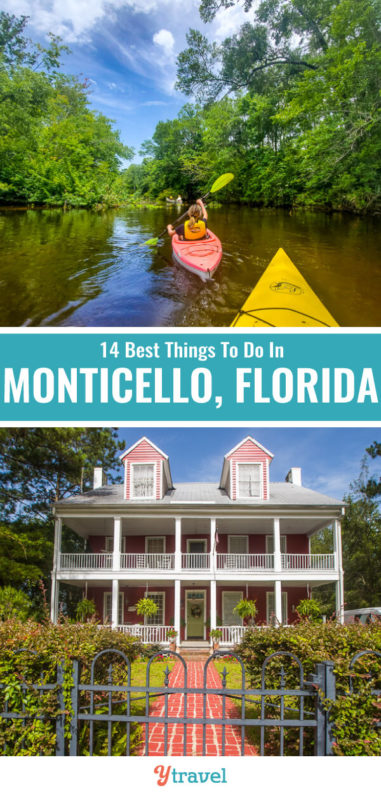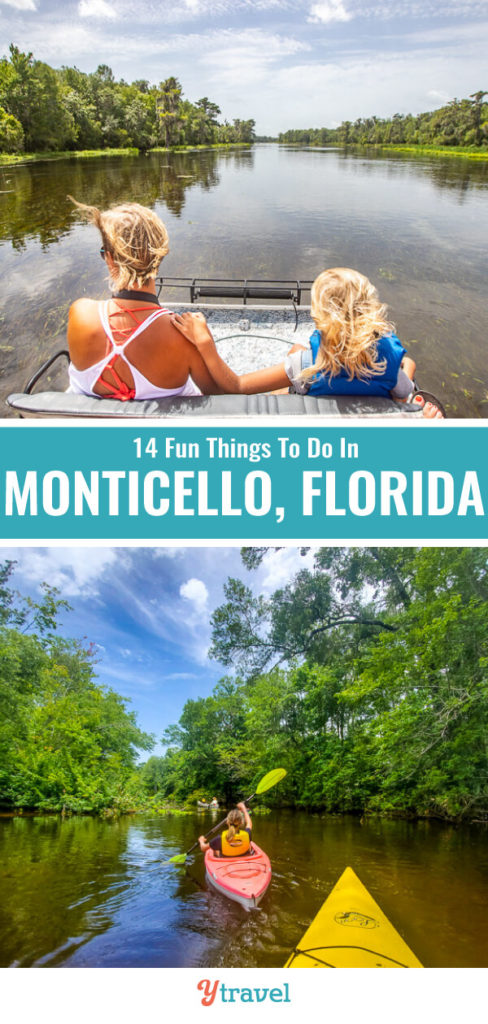Sponsored by Visit Florida
Every now and then you find a place like Monticello, Florida that pulls you in and welcomes you like a long-lost friend.

A place where the focus is on community connection and the appreciation of the surrounding natural beauty that enriches that community.
People take the time to ask how you are, find out your story, share their stories, and introduce you to what makes them so happy about living in their town.
So much that by the end of your three-day stay, you’re greeting people by name and checking in with their day.
What was even more remarkable about our trip to Monticello, FL was being able to have those connections in a socially distant world.
There’s no amount of feet in separation and masks that can stop warmth and friendliness. Now that’s a contagion you can welcome into your life.
Where is Monticello, Florida
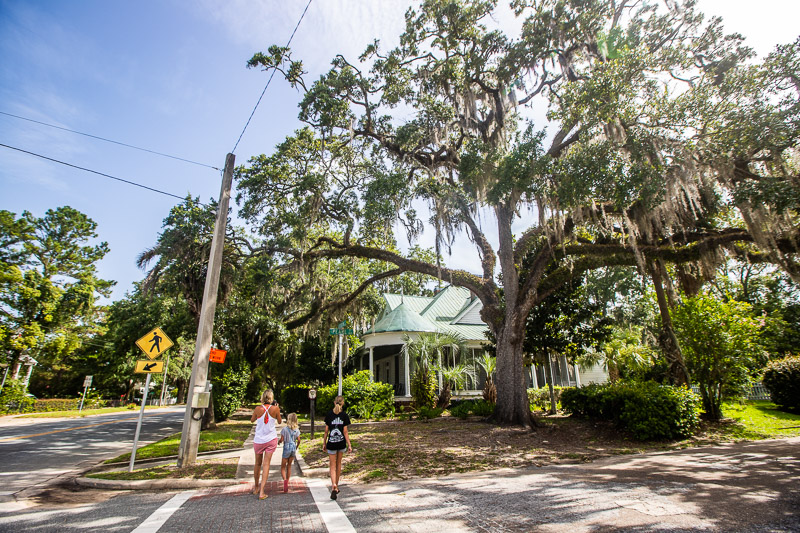
The city of Monticello is in the heart of Natural North Florida and has a population of just over 2,000 people.
This charming, historical town, located 24-miles east of the state capitol, Tallahassee, was founded in 1827 and is the seat of Jefferson County.
Jefferson is known as the Keystone County for its unspoiled beauty and mild climate offering the ‘keys to quality living.’

Thankfully, we had Katrina from the Jefferson County Chamber of Commerce as our local guide sharing with us the best things to do in Monticello and the beauty of this rural region and lifestyle.
She enthusiastically introduced us to many locals, sharing their fascinating stories and backgrounds and making the town come alive.
We also discovered a place full of adventure, unique and pristine beauty, historical and educational experiences, and a community focused on supporting local businesses and a vibrant lifestyle.

It was a delight to visit Monticello and finish our Natural North Florida road trip in this small city – possibly the friendliest we’ve visited in the US.
As your travels now focus on outdoor adventure where space and fresh air is a normalcy, Monticello Florida and the entire Natural North Florida region is an area we recommend for a safe and enjoyable road trip experience.
Note: we visited Natural North Florida on a paid campaign with Visit Florida, and in partnership with Natural North Florida. All words and images are our own!
Below are the best things to do in Monticello, FL.
Kayak or Airboat the Wacissa River

If you want to experience a true Florida treasure, exploring the Wacissa River is a must. It’s one of the most pristine, beautiful, and adventurous experiences we’ve had in the US.
So much so, we’re wrote an entire post dedicated to our amazing experience exploring the Wacissa River by airboat and kayak.
The Wacissa River is a first magnitude clear, spring-fed stream that is fed by about 20 springs at the headwaters.
We joined Captain Brad Cooley from 5 Rivers Adventure who took us on an 11-mile airboat adventure zigzagging over the eelgrass and bright green lilies covering the river.
We navigated through narrow channels canopied by Spanish moss cypress and oak trees, chasing egrets and bald eagles, and fast diving alligators.
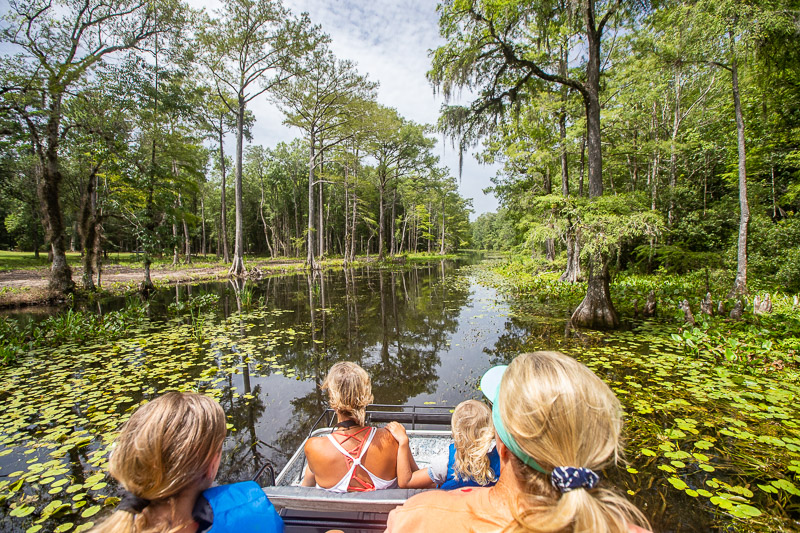
Brad took us to see a couple of the springs that feed this river, including the popular swimming hole Big Blue, and shared with us much about the history of the area and the flora and fauna.
It was an exhilarating adventure and one of our new favorite things to do in Florida, made all that much better by Savannah’s tight grip on my arm and squeals of equal terror and delight.

The Wacissa River captured my heart. It’s truly one of the most pristine and beautiful places I have visited. When you visit Florida, don’t miss it.
Kayak the Slave Canal
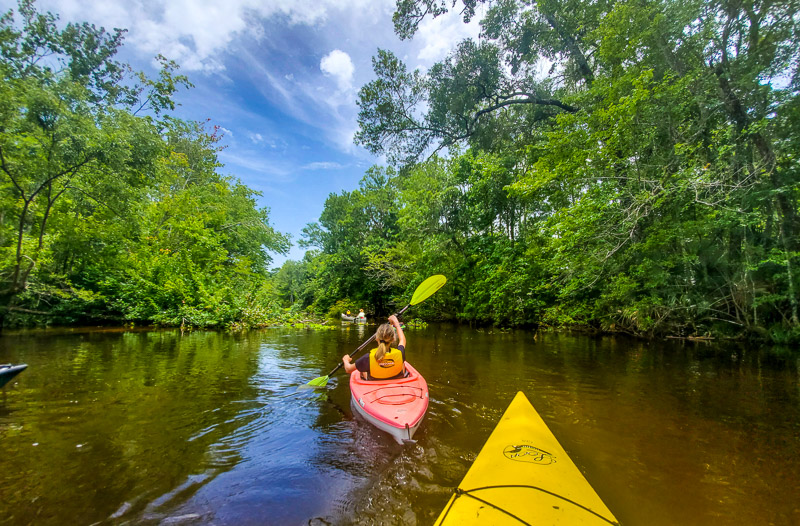
Our adventure on the Wacissa River did not end at our Goose Pasture picnic spot.
We traded our airboat for kayaks and set off on a thrilling and challenging adventure through the Slave Canal which connects the Wacissa to the Aucilla River.
We’ll share more of the history in our upcoming post, but it was originally built by the slaves for plantation owners to transport cotton down to the Gulf.
Blocks of limestone remain and are a reminder along the way of the arduous work forced by slaves.
The sobering history doesn’t stop there, Indian Mounds also indicate life that existed here more than 14,000 years ago as proved by the Aucilla Research Institute (see below).

It’s best to take this trip with an experienced guide.
The Slave Canal is marked but you could get lost and despite the quickly moving water assisting your paddling, it’s quite a technical paddle as you navigate narrow spaces, fallen logs and the overhanging branches of ancient oaks, cypress and palmettos draped with Spanish Moss.
This adventurous kayak trip is beyond stunning and a must-do when you visit Monticello, Fl.

Keep an eye out for the alligators poking their eyes above the water watching you!
Hopefully, you’ll get to see one dive into the river with a giant tail splash like Savannah did acting as head spotter in the front of our guide’s canoe.
Play with Lemurs at the North Florida Wildlife Center
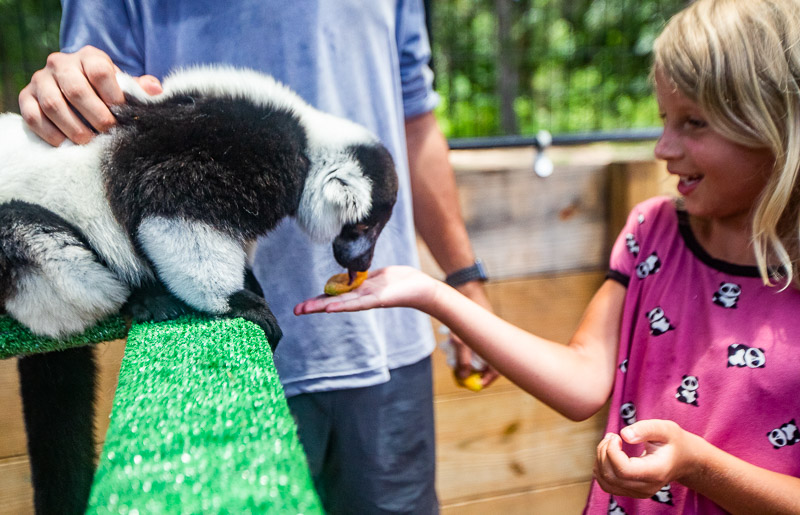
The Lemur Story.
We’ll have it for the rest of our lives. And we’ll tell it for the rest of our lives.
Savannah even jumped on the camera to share it. (I was impressed to hear all she had learned about the lemurs. She was paying attention!)
We fell in love with the North Florida Wildlife Center at first walk in the door when six-week old Gili bounded over to greet us.
Gili is named for his red coat that immediately gave us a longing for Australia.

Yep. Gili is a kangaroo and means flame in Indigenous language. We fell over each other to pat and cuddle him. Oh, how we’ve missed our roos.
We also met for the first time in our life an albino wallaby.
The Florida Wildlife Center is a not-for profit, founded by passionate bird lover, Ryan David Reines.
I was shocked (and impressed) when David was introduced to us to discover a much younger animal lover than my mind’s imaginings.
David is a recent college graduate, who after years of experiencing the wrong way to treat animals, decided to create a facility to help educate people mostly on endangered animals and support conservation efforts around the world.
He’s on a winning formula as our girls are now in love with lemurs, and after accepting that they can’t have them as pets, have decided to do what they can to help conservation of them in the wild.
What happened with the lemurs, I hear you ask?
Well, after tempting them with a delicious fruit snack on her hand, one lemur decided Savannah’s hair was far tastier.
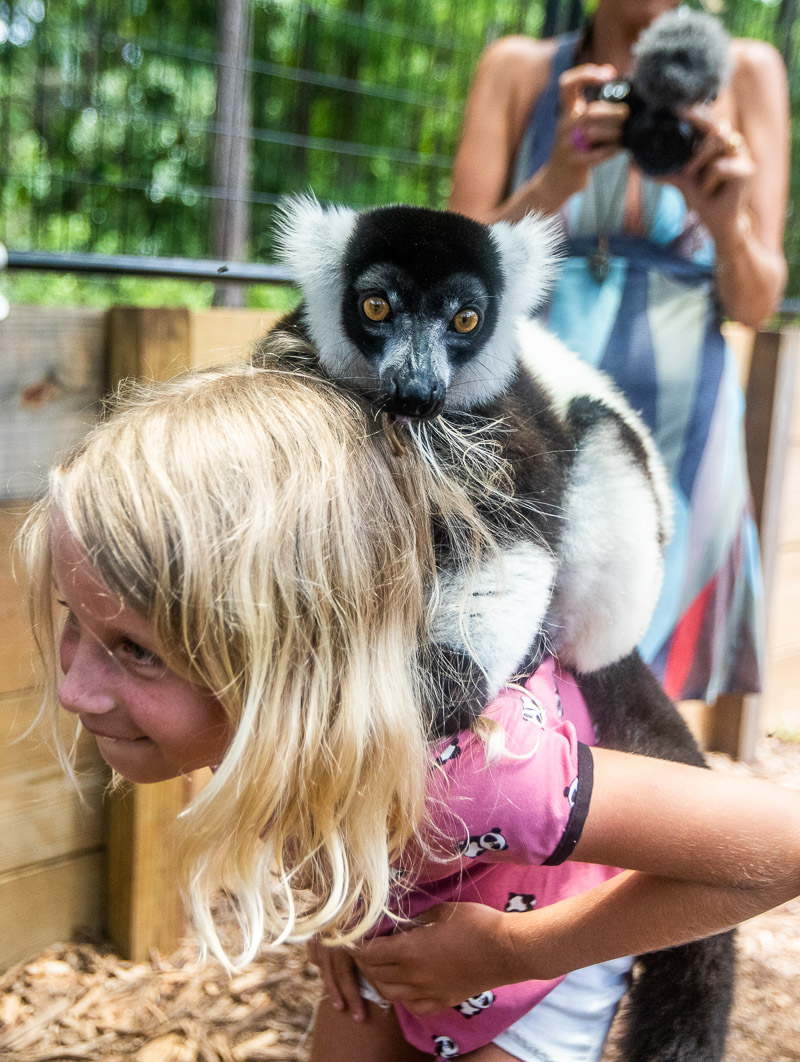
He took every chance to jump on her shoulders, grab her hair with one hand, and quietly lick and eat clumps of it in the other.
He was fascinated and let out a giant lemur squeal when he was denied it! We loved this up-close experience with the lemurs. We were all shocked to discover how soft and gentle their feet were when they stood on you.

At the center you can also meet other exotic birds and wildlife. All tours go towards the animals and conservation efforts.

This is definitely a place to put on your itinerary for a trip to Monticello with kids!
We love the work we do and honor the platform we have and look for ways we can support and give back. We were all happy to donate to this great cause of Ryan’s. If you would like to learn more and do the same visit this link.
Learn about local produce and companies
A good life is one that supports local business and communities.
We love to learn about the companies and industry unique to an area and help give it its distinct flavor. We were fortunate to visit two local farms in the Monticello region.
Behind the scene tours can be organized directly through each company.
Florida Georgia Citrus Company

Have you ever considered what goes into your delicious glass of orange juice each morning?
If you’re like us and juice your own, you know just how annoying and time-consuming it is cleaning up after juicing just one orange.
How often we gulp down what we consume without understanding the work that goes into it?
Our very educational behind the scenes tour of the Florida Georgia Citrus Company gave us an insight into the effort that goes into growing delicious satsuma oranges.
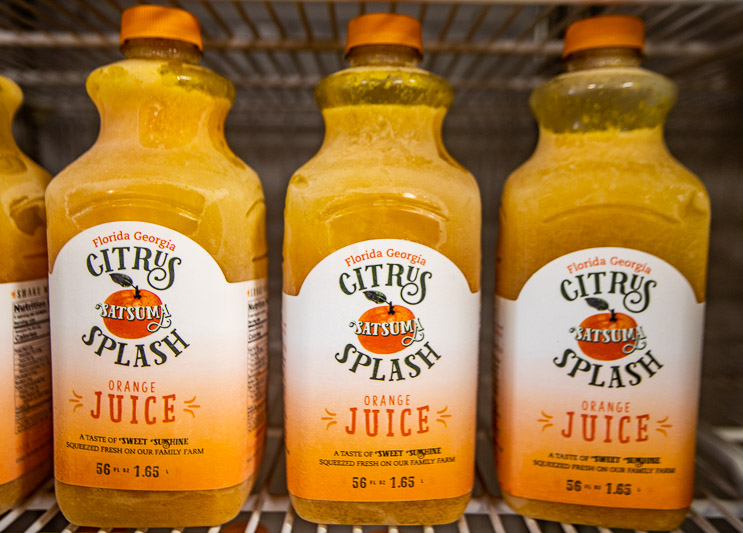
Owners, Kim and Angela Jones, started this farm as a hobby after retirement and to teach their grandchildren the value of hard work – whether they end up taking over the farm or not.
I was impressed by how much they, and their farm manager Dale, had learned about growing Satsuma oranges for the past six years.
Never heard of Satsuma oranges before?
Neither had we and hopefully we can get our hands on some back in North Carolina.
A satsuma is a seedless mandarin and are smoother and sweeter than oranges. I like them far more.
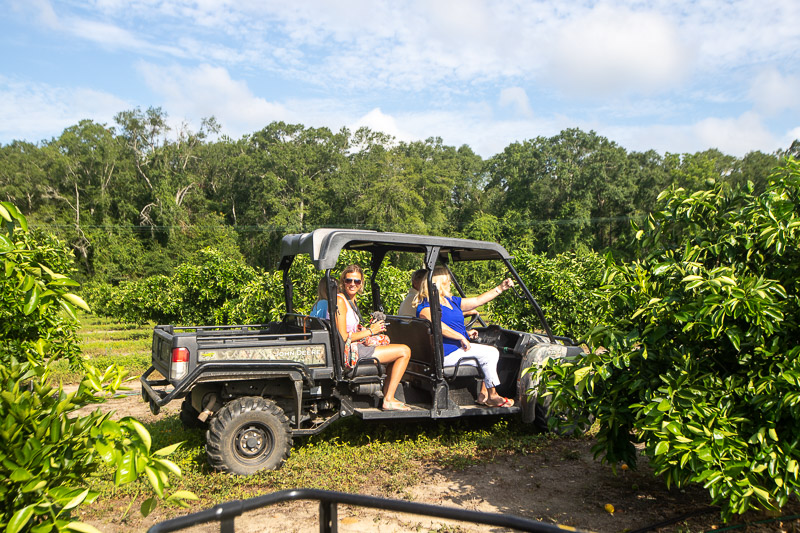
Satsumas were grown in this region in the late 1800s, but had limited success because of severe freezes.
It’s now seeing a resurgence as they have learned how to better manage the freezes. This region provides a better growing climate for satsumas than down the warmer South Florida.
It was outside of season, so we did not get to experience the processing of the fruit, but we learned about it on an informative tour of the facilities and orchards that ranged from trees only a few years old to their very full six year growth.
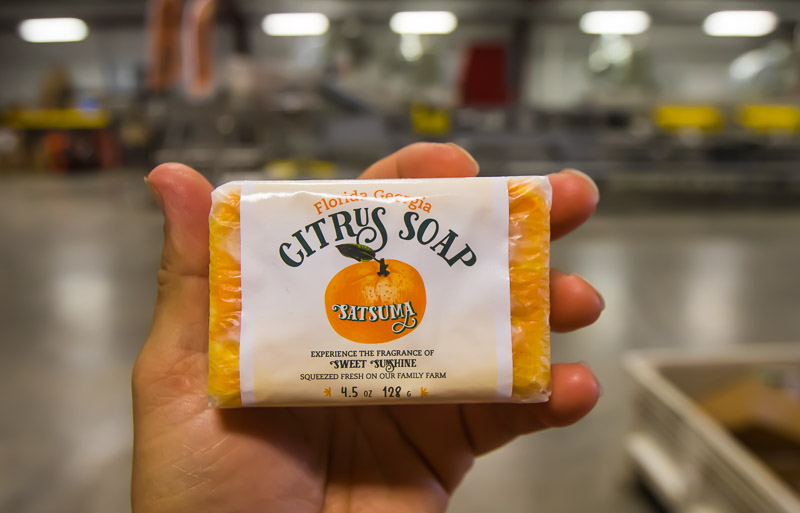
Their satsuma oranges are also made in local produce such as Blackberry Patch’s syrups, Lake Tribe’s Satsuma Wheat beer, Talahred Goat Farms body produces (we have some – amazing with wholesome ingredients).
Full Moon Apiary

Anyone dedicating their lives to the protection of bees deserves an honorary medal.
It’s no easy feat. We learned all about the challenges facing beekeepers on a behind the scenes visit to the Full Moon Apiary farm with owner, Tony Hogg.
The number one threat to these bees are tiny pests – mostly introduced pests.
Ugh. Isn’t that the battle most ecosystems and species face?
I had my first bee sting nearly two years ago and was stunned by how much it hurt. I was even more stunned to be standing next to a hive as hundreds of bees climbed over it busy at work and swarmed all around me. I felt no fear and received no sting.
Tony did smoke it before we walked near, which does not hurt the bees, but disrupts a signal that warns them, “danger, sting.”
Tony and his wife, Becky began their journey with bees about 10 years ago to overcome their daughter’s fear of insects.
Tony and Becky now have about 100 hives and sell honey, beeswax candles and gifts at their Monticello shop.

Full Moon Apiary has a small store in town and is filled with wonderful bee inspired gifts and all the different flavors of his honey such as galberry honey, black mangrove, and palmetto.
We were happy to grab a few bottles and other bee related products. Loving and supporting bees is a priority for our family.
You know if they go, we’re all in big trouble, right?
Plus, when you learn about them, they are amazing animals that will inspire you.
Tony’s advice:
“The best way you can help, is to purchase honey from your local beekeeper. Ask questions about how they produce the honey and look after the bees. It’s the best way to know the honey is genuine and you are giving back to the bees.”
Most honey you find on the supermarket shelves is not local and is filled with non-honey crap you don’t want to eat.
Tall Timbers and Dixie Plantation
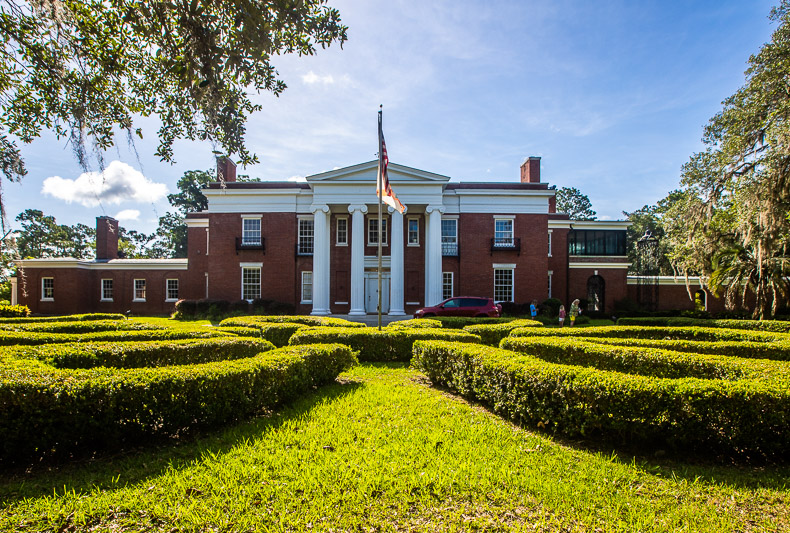
In the 1820s, aristocratic planters came to Jefferson County for its beautiful rolling hills and fertile soil. There are about 900,000 acres of plantation land now, mostly used for quail hunting, trail riding and conservation.
Over 130,000 of these acres from Tallahassee, Florida to Albany, Georgia are managed under perpetual conservation easements in the Tall Timbers project.
These ecosystems are protected under Tall Timbers and can never be developed – goodbye Walmart and subdivisions! Their intention is to preserve the past, present and future of the Red Hills area.
We enjoyed learning about this on a tour of Dixie Plantation, the winter escape for Gerald and Elanor Livingston, governor of the New York Stock Exchange.

The centerpiece of the estate is the 14,200 sq. foot Neo-Classical Revival mansion designed by John Russel Pope in 1936, who was one of the most prominent 20th Century architects in the US.
He designed the National Archives, Jefferson Memorial and National Gallery of Art at the Washington Mall.
It became one of the finest field trial venues in North America and a highly regarded quail hunting plantation. In 2013, it was gifted to Tall Timbers by daughter, Geraldine who loved this estate so much she wanted to ensure the land was protected.
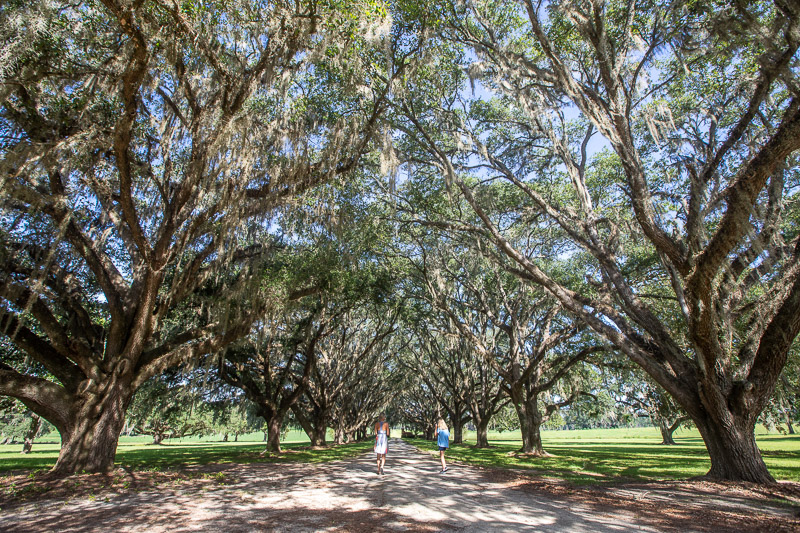
A massive restoration project is underway with plans for the house to host public events and promote an appreciation and understanding of the natural and cultural heritage of the Red Hills.
Tall Timbers has a mission of land conservation, community planning and education, and we decided to donate to this organization to continue its land conservation work.
Aucilla Research Institute
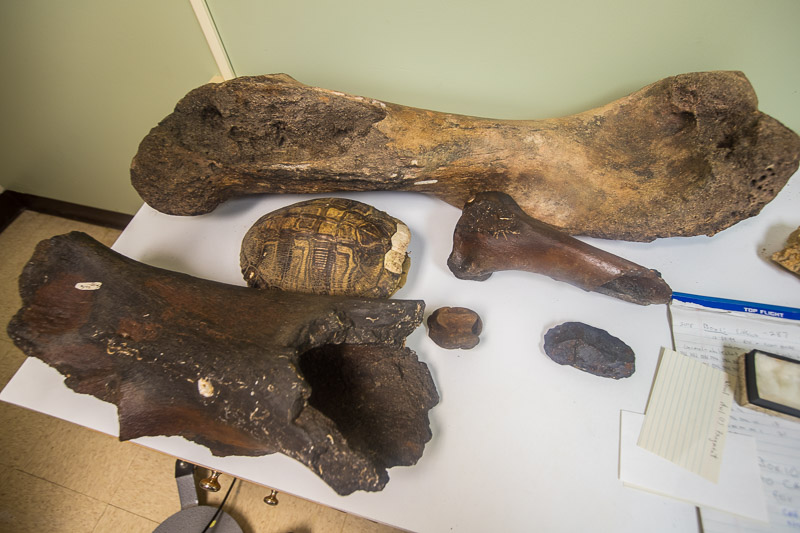
The Aucilla Research Institute was established in Monticello, Fl to attract and promote original research in the earth sciences and natural history of the Big Bend area of Florida.
It provides opportunities for researchers and students conducting fieldwork at paleontological, archaeological, geographical, and ecological sites throughout the region.
We were given a tour by Tom Harmon, passionate diver and archaeologist who showed us many of the interesting and ancient artifacts discovered in the Aucilla region area including mastodon bones and first people tools.

An exciting discovery was made in 2016 that may hold clues about the first Americans. Prehistoric mastodon bones and a stone knife indicate life at around 14,550 years ago, about 1500 years before the first humans in the southeast were meant to be found.
It was fascinating to learn more about the work of the project and the processes and tools they use to uncover this ancient information.
Monticello Opera House
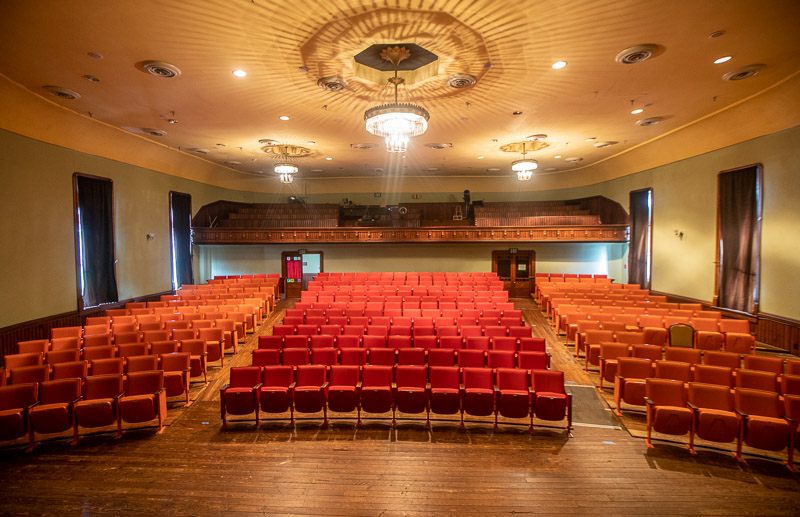
Built in 1890, the Monticello Opera House was built by visionary and entrepreneur John Perkins who noticed the wealthy northerners coming to the Monticello region for hunting and fishing.
Of course, they’d love to take in a show and stay in a grand hotel.
So, he built it and they came – walking up the winding staircase to a modern (at the time) and an almost-perfect acoustic theater.
Thankfully, a group of locals gathered in the 70’s to protest plans to tear it down for a gas station.
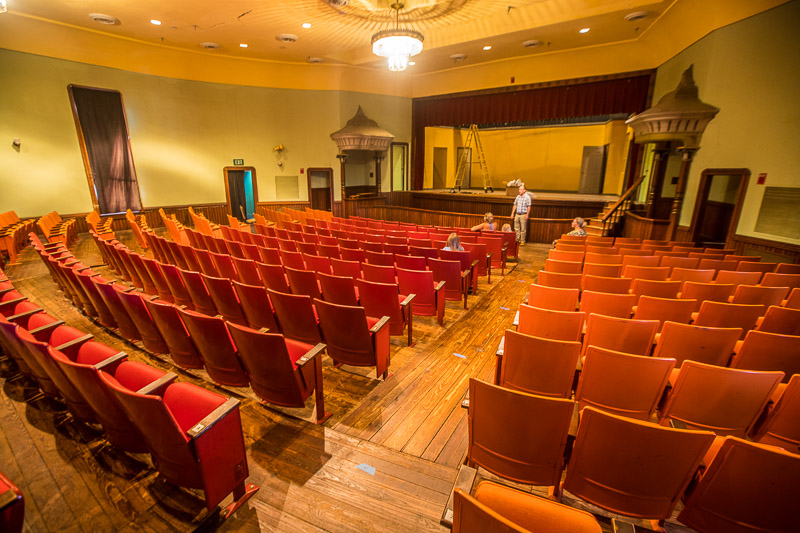
Their generous donations instead began a restoration project bringing the Monticello Opera House back to its former glory as the cultural heart of the town.
The Opera House hosts a variety of Broadway style musicals, children’s theater, plays, speakers and dinner theaters.
Downtown Monticello Historical Tour & Shopping

Monticello’s 27-square block historic district encompasses roughly 600 pre-1930s buildings.
It received its own listing on the National Register of Historic Places and 22 of the individual buildings are also listed on the register including the Lyndhurst Plantation, the Jefferson County Jail, and the Monticello High School.
You can do a self-guided walking tour of the district to learn more about the homes.
We did a tour of the Pascoe House, an artfully restored passion project of the owners and the Wirick-Simmons House, a Greek Revival built in 1831.

As was typical of our Monticello visit, this tour was made all the more enjoyable by a local guide who entertained us with his stories of the home community and his own life.
Every year, many homes and properties open for the Monticello, Home and Heritage Tour of Homes. You can explore these stately homes, restored public buildings and glorious gardens.
If you’re into your Florida history, in the center of downtown is the courthouse on Florida’s first roundabout.

The streets running off here are filled with unique local boutique stores with names such as A day with a Past Tea Parlor; Victoria’s Boutique; Two Sisters, New Beginnings; and Two Old Men.
Do not miss Oh Happy Days and The Luckie Pearl in the mint green restored fuel station.

One of my favorite memories of our Monticello trip was on our last day as we were about to leave and chatting to about five of the locals who by now knew us by name!
Stay at Avera-Clarke B&B
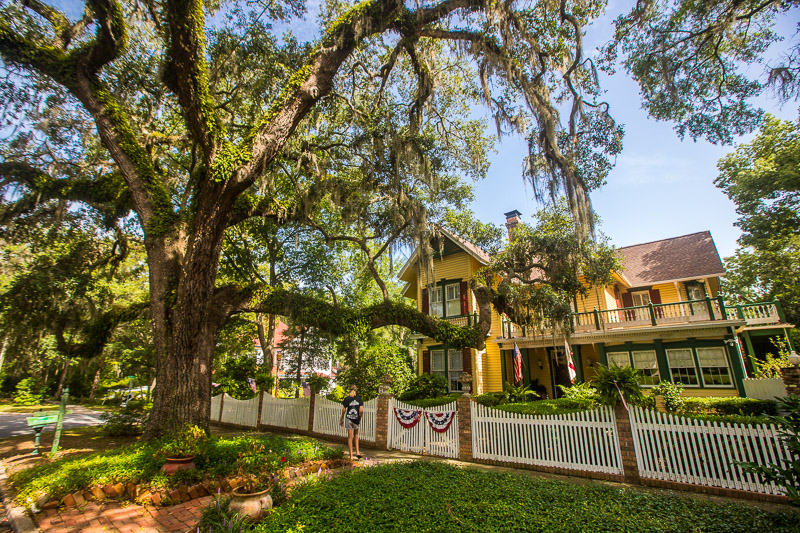
Looking for places to stay in Monticello?
You can’t go wrong at the gorgeous and historic Avera-Clarke House, a Victorian home built in 1890 that blends modern touches with antebellum Florida.
It’s located on an acre block filled with tall Oak and Magnolia trees in downtown Monticello.
There are four bedrooms in the inn. We stayed in the garden cottage, a fully restored, 900 sq. ft. structure (circa 1821) with all living quarter amenities including a kitchen and 1 1/2 baths.

We loved the comforts of the cottage and the beautiful deck and gardens outside our door.
Owners, Troy and Gretchen, were very gracious and hospitable and delivered our breakfast to our door the evening before to make it easy to fit into our busy days.
Places to Eat in Monticello
Tupelo’s Bakery and Cafe

Did somebody say cupcake?
For a gluten free person, delicious cupcakes are hard to find. Previously to eating at Tupelo’s Bakery, Molly’s Cupcake in NYC was in a league that no one could touch.
The cupcake we had at Tupelo slid in right beside it as the best cupcake in the USA.
Their sweet potato soup was equally delicious as were their sandwiches on homemade organic bread. This bakery has been named in the top 11 bakeries in Florida!

Everything here is made from scratch and almost 100 percent organic, using local foods and supporting local farmers.
Carrie Ann and Co
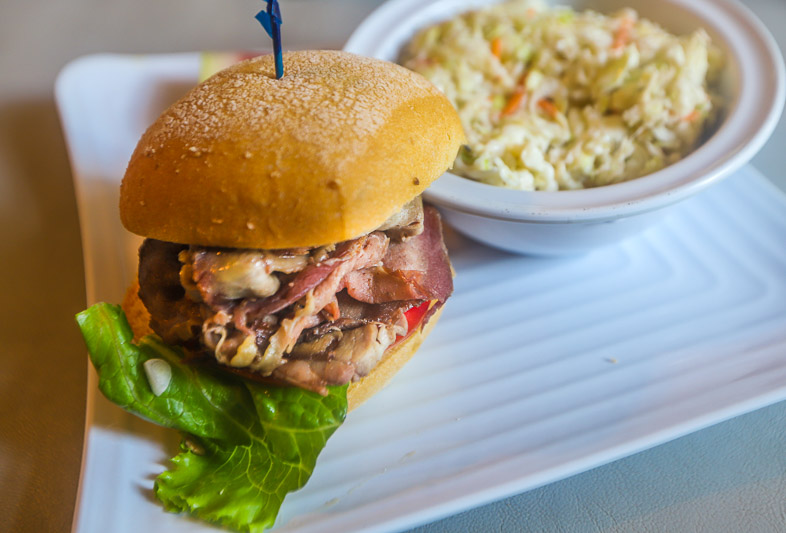
Another of the Monticello restaurants popular with the locals, Carrie Ann and Co is located at The Mays House, a restored historic 1922 residence. The Chicken Salad will give you that Southern Fix.
Mafia Pizza & Speakeasy bar

We ordered take out from Mafia Pizza to eat from the comfort of our cottage. It was delicious as were the mussel appetizers. Mafia Pizza also has a speakeasy bar if you wish to dine in.
Rancho Grande Mexican Restaurant
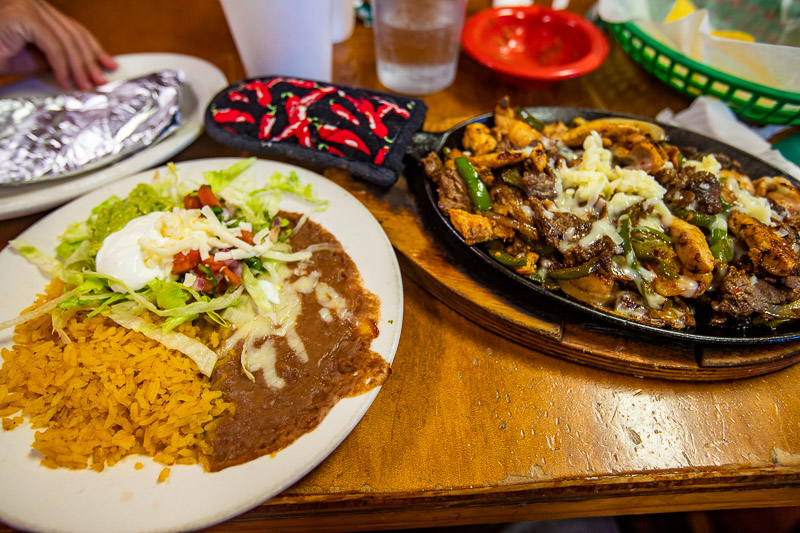
Another local’s favorite gathering place is Rancho Grande Mexican serving your traditional Mexican meals. Again, we met several of the locals here!
Watch our Monticello Video:
We hope this post helps you plan your own Monticello trip. Be sure to drop into the visitor center to see Katrina and tell her Caz and Craig sent you!
Don’t miss this other wild family adventure we had in Natural North Florida: Scalloping in Steinhatchee.
